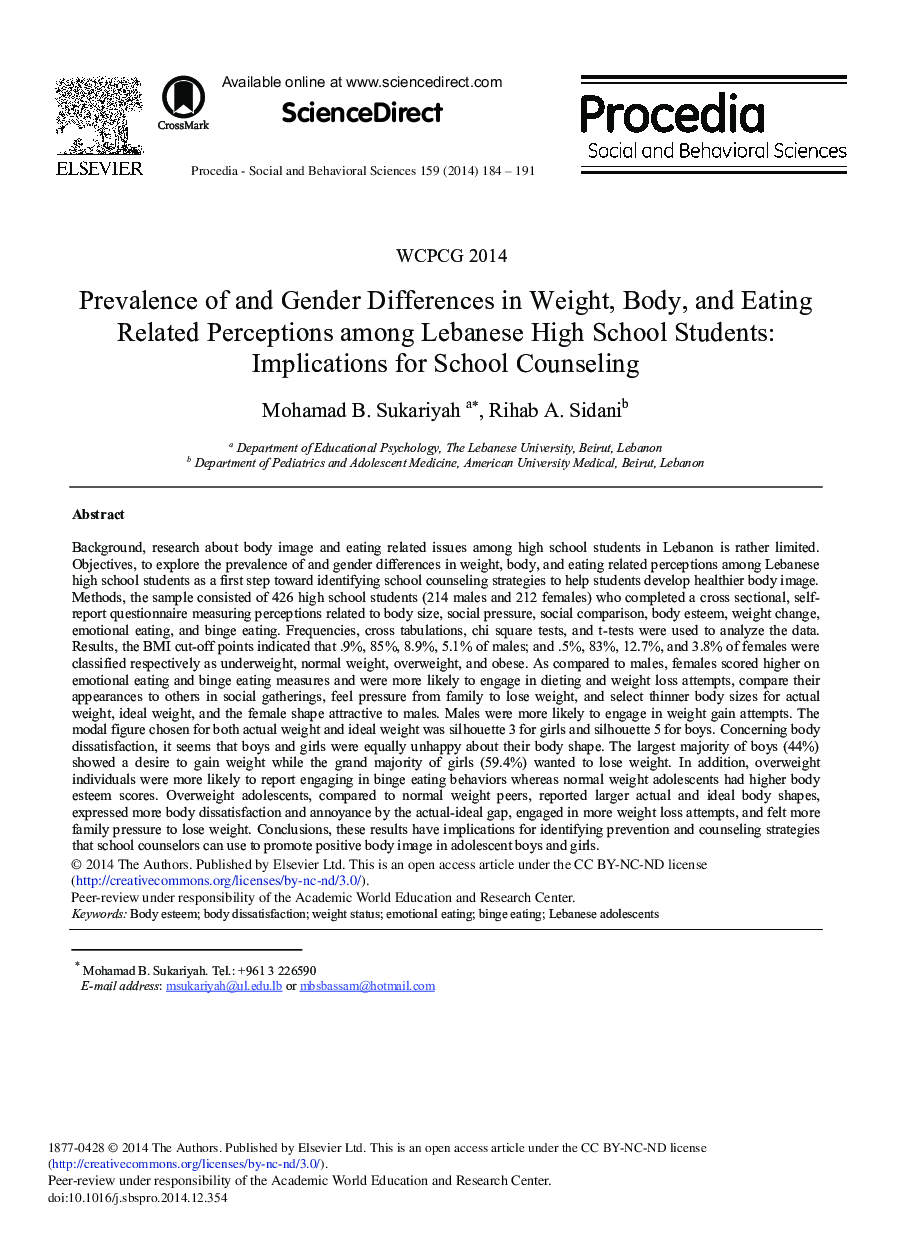| کد مقاله | کد نشریه | سال انتشار | مقاله انگلیسی | نسخه تمام متن |
|---|---|---|---|---|
| 1112385 | 1488400 | 2014 | 8 صفحه PDF | دانلود رایگان |
Backgroundresearch about body image and eating related issues among high school students in Lebanon is rather limited. Objectives, to explore the prevalence of and gender differences in weight, body, and eating related perceptions among Lebanese high school students as a first step toward identifying school counseling strategies to help students develop healthier body image.Methodsthe sample consisted of 426 high school students (214 males and 212 females) who completed a cross sectional, self-report questionnaire measuring perceptions related to body size, social pressure, social comparison, body esteem, weight change, emotional eating, and binge eating. Frequencies, cross tabulations, chi square tests, and t-tests were used to analyze the data.Resultsthe BMI cut-off points indicated that .9%, 85%, 8.9%, 5.1% of males; and .5%, 83%, 12.7%, and 3.8% of females were classified respectively as underweight, normal weight, overweight, and obese. As compared to males, females scored higher on emotional eating and binge eating measures and were more likely to engage in dieting and weight loss attempts, compare their appearances to others in social gatherings, feel pressure from family to lose weight, and select thinner body sizes for actual weight, ideal weight, and the female shape attractive to males. Males were more likely to engage in weight gain attempts. The modal figure chosen for both actual weight and ideal weight was silhouette 3 for girls and silhouette 5 for boys. Concerning body dissatisfaction, it seems that boys and girls were equally unhappy about their body shape. The largest majority of boys (44%) showed a desire to gain weight while the grand majority of girls (59.4%) wanted to lose weight. In addition, overweight individuals were more likely to report engaging in binge eating behaviors whereas normal weight adolescents had higher body esteem scores. Overweight adolescents, compared to normal weight peers, reported larger actual and ideal body shapes, expressed more body dissatisfaction and annoyance by the actual-ideal gap, engaged in more weight loss attempts, and felt more family pressure to lose weight.Conclusionsthese results have implications for identifying prevention and counseling strategies that school counselors can use to promote positive body image in adolescent boys and girls.
Journal: Procedia - Social and Behavioral Sciences - Volume 159, 23 December 2014, Pages 184-191
